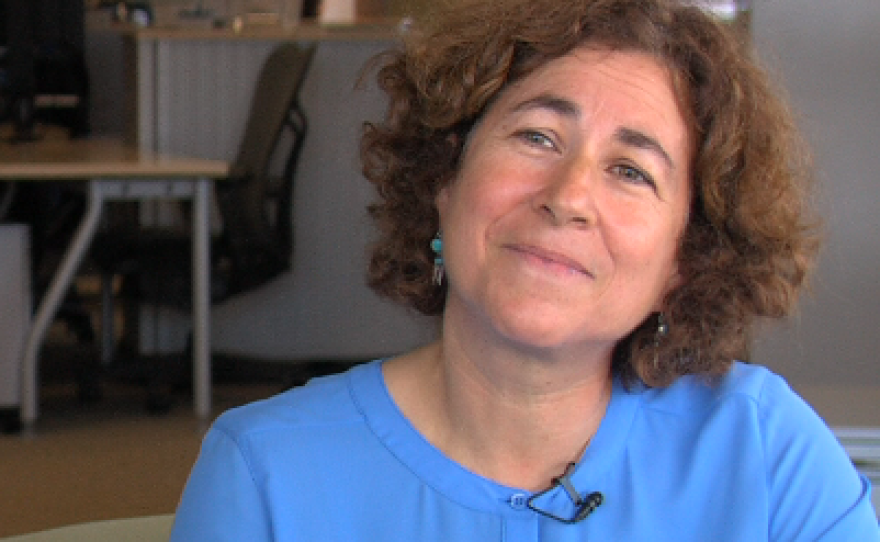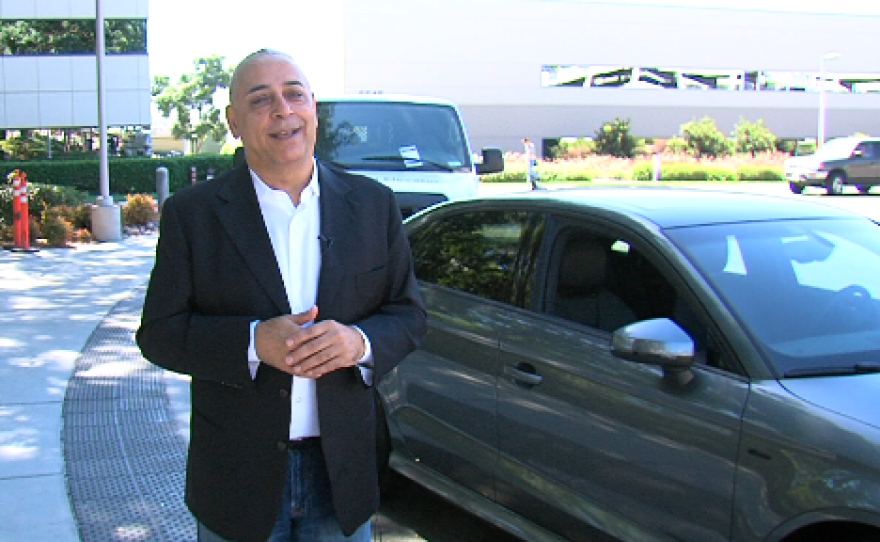Car companies aren't known for being cutting-edge. They've been slow to adapt to an increasingly connected world. But now, cars are starting to catch up, becoming more and more like huge smartphones on wheels.
Smartphones, however, can be distracting. Will the car of the future take drivers' minds off the road? To find out, I took one of these cars for a test drive outside the headquarters of Qualcomm in San Diego's Sorrento Valley.
If you know Qualcomm, you probably know it as the company that makes the chips inside our smartphones. But Kanwalinder Singh, a company senior vice president, said Qualcomm officials now see cars as their next big opportunity.
"Fundamentally, the car is turning into a smartphone," Singh said from the passenger seat. "In fact, Audi calls the car we're driving the world's largest smartphone."
I'm behind the wheel of an Audi A3, the first car to have its own 4G connection.
It has Internet radio, more detailed Google maps, Netflix streaming for the kids in the backseat. Drivers can dictate tweets using voice command. And the car reads incoming texts out loud.
Singh said Qualcomm's long-term goal is to power self-driving cars, to take human drivers out of the equation entirely. But that's a long way off. For now, the company is tricking out cars with the kinds of features we've come to expect on our phones.
And if this all sounds terribly distracting for the driver, Singh said it's just the opposite.
"We believe that driver distraction would actually be alleviated by providing these services," he said.
Today, drivers are constantly tempted to look down at their phones, Singh said. He doesn't trust them to resist the urge. He argues cars should give drivers a safer way to stay connected while behind the wheel.
"When all of this is embedded like it is in this Audi, phone calls destined to you and your smartphone would actually come through the car's antenna and play through the car's audio-visual system. And you would interact through the car," Singh said.
Inside a classroom full of people who drive for a living, I hear a different kind pitch. I'm sitting in on a driving safety class put on by a team of UC San Diego School of Medicine researchers. Here, law enforcement personnel tell professional drivers to focus on one thing and one thing only when they're behind the wheel: driving.
Professor Linda Hill is in charge of the program that puts on this class, UC San Diego's TREDS. She sees all the features coming to the car as a public health problem.
"Twenty-six percent of injury crashes now involve a distraction that's using a cellphone," Hill said. "That's a statistic that didn't even exist 20 or 30 years ago."

And Hill doesn't think companies like Qualcomm are making us any safer. "I think they're really ignoring the powerful effect of cognitive distractions," she said.
Sure, voice command might address visual distraction, preventing drivers from staring down into their laps, she said. But eye-tracking studies have shown that, even when drivers have their hands free and their eyes on the road, their mind can still be elsewhere.
"What you see through the windshield is reduced by 50 percent when someone's talking to you on the phone."
As for text messaging, voice command might even make things worse.
"A recent study looking at that found that voice-to-text increased driving errors more on a closed driving course than text-to-text did, shockingly."
Hill knows drivers feel pressure to constantly check email or take that call from the boss.
But she said research shows there is no truly safe way to stay connected while driving.
The approach she favors is abstinence-only.
"Even if they develop the perfect app — that you could talk to your dashboard and it would do what you said — the data we have today says that's not going to be safe," Hill said.
Using a handheld cellphone while driving has been illegal in California for six years, but a recent study showed the law has not reduced traffic accidents. Many experts think drivers just went on using phones despite the ban. Hill's own research reveals that more than 90 percent of college students admit to using phones while driving.
Qualcomm's Singh said that's exactly why we need to reinvent how drivers get access to the information locked up in their phones.
"I think today consumers are basically interacting with their smartphones while driving. But in the future, if the same service is provided in a safe way, that should help," he said.
Hill doesn't buy it. But she does like the idea of building one piece of technology into cars. An app that disables phones in moving vehicles.







